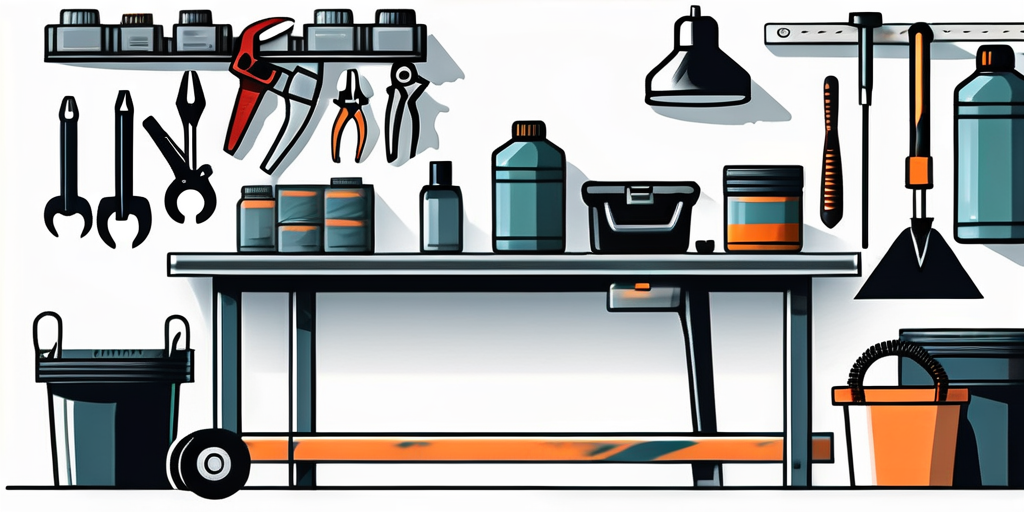What is Maintenance? Explained by AvalonKing
Maintenance, particularly in the context of ceramic coating, is a term that encompasses a wide range of practices and procedures designed to keep a coated surface in optimal condition. This glossary entry by AvalonKing will delve into the intricate details of maintenance, its importance, types, and how it relates to ceramic coating.
Understanding maintenance is crucial for anyone who has invested in ceramic coating, as it helps to prolong the life of the coating and ensures that it continues to provide its protective benefits. This article will provide a comprehensive guide to maintenance, exploring everything from the basic definition to the specific practices involved.
Understanding Maintenance
Maintenance, in its most basic form, refers to the process of preserving a condition or situation. In the context of ceramic coating, maintenance involves taking care of the coated surface to ensure it remains in the best possible condition. This can involve cleaning, repairing, or replacing parts as necessary.
It's important to note that maintenance is not a one-time event, but rather an ongoing process. Regular maintenance is crucial for ensuring the longevity and effectiveness of ceramic coating. Without proper maintenance, the coating may deteriorate over time, losing its protective properties and aesthetic appeal.
The Importance of Maintenance
Maintenance is essential for a number of reasons. Firstly, it helps to prolong the life of the ceramic coating. Ceramic coating is a significant investment, and regular maintenance ensures that you get the most out of this investment by keeping the coating in top condition for as long as possible.
Secondly, maintenance helps to preserve the protective properties of the ceramic coating. Ceramic coating provides a layer of protection against environmental factors such as UV rays, chemical stains, and scratches. Regular maintenance helps to ensure that this protective layer remains intact and continues to provide these benefits.
Types of Maintenance
Maintenance can be divided into several types, each with its own set of practices and procedures. The most common types of maintenance include preventive maintenance, corrective maintenance, and predictive maintenance.
Preventive maintenance involves regular inspections and servicing to prevent potential problems before they occur. Corrective maintenance, on the other hand, involves repairing or replacing parts that have already failed or are showing signs of failure. Predictive maintenance involves using data and analytics to predict when a part might fail, and taking action to prevent this.
Maintenance and Ceramic Coating
Maintenance plays a crucial role in the context of ceramic coating. Ceramic coating provides a layer of protection for surfaces, but this layer can deteriorate over time if not properly maintained. Regular maintenance helps to ensure that the coating remains in top condition, providing its protective benefits for as long as possible.
There are several specific maintenance practices that are particularly relevant for ceramic coating. These include regular cleaning, using the right cleaning products, and avoiding abrasive materials. Each of these practices will be explored in more detail in the following sections.
Regular Cleaning
One of the most important maintenance practices for ceramic coating is regular cleaning. Dirt, dust, and other contaminants can accumulate on the coated surface over time, and if not removed, these can cause the coating to deteriorate. Regular cleaning helps to remove these contaminants and keep the coating in top condition.
It's important to note that cleaning should be done gently to avoid damaging the coating. High-pressure washing, for example, can be too harsh for ceramic coating and may cause it to deteriorate faster. Instead, a gentle wash with a soft cloth or sponge is recommended.
Using the Right Cleaning Products
Another crucial aspect of maintenance for ceramic coating is using the right cleaning products. Some cleaning products contain harsh chemicals that can damage the coating, so it's important to choose products that are safe for ceramic coating.
It's recommended to use pH-neutral cleaning products, as these are gentle on the coating and won't cause it to deteriorate. It's also a good idea to avoid products that contain abrasives, as these can scratch the coating and cause it to wear down faster.
Avoiding Abrasive Materials
Finally, it's important to avoid using abrasive materials when maintaining ceramic coating. Abrasives can scratch the coating, causing it to deteriorate faster. This includes both abrasive cleaning products and abrasive cleaning tools.
Instead, it's recommended to use soft materials for cleaning, such as microfiber cloths or sponges. These materials are gentle on the coating and won't cause it to scratch or wear down.
Conclusion
Maintenance is a crucial aspect of ceramic coating, helping to prolong the life of the coating and ensure it continues to provide its protective benefits. By understanding the importance of maintenance and the specific practices involved, you can ensure that your ceramic coating remains in top condition for as long as possible.

Remember, maintenance is not a one-time event, but rather an ongoing process. Regular cleaning, using the right products, and avoiding abrasive materials are all crucial for maintaining the condition and longevity of your ceramic coating.
Ready to ensure your vehicle's ceramic coating stays in pristine condition? Look no further than AvalonKing for all your car maintenance needs. With years of expertise in providing top-quality car cleaning products, AvalonKing has everything you need to keep your car looking its best. From ceramic coatings to car shampoos, our selection is designed to meet the highest standards of care for your vehicle. Check out our products today and join the community of car enthusiasts who trust AvalonKing for their vehicle maintenance!










